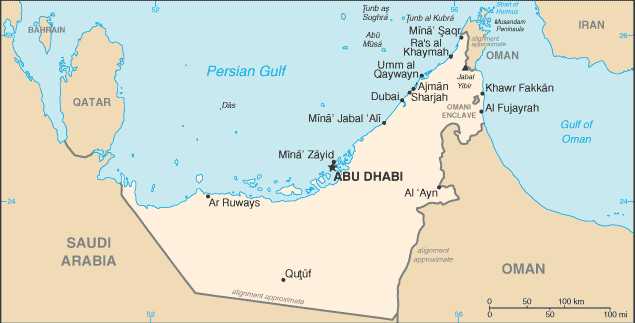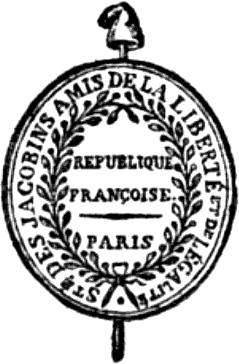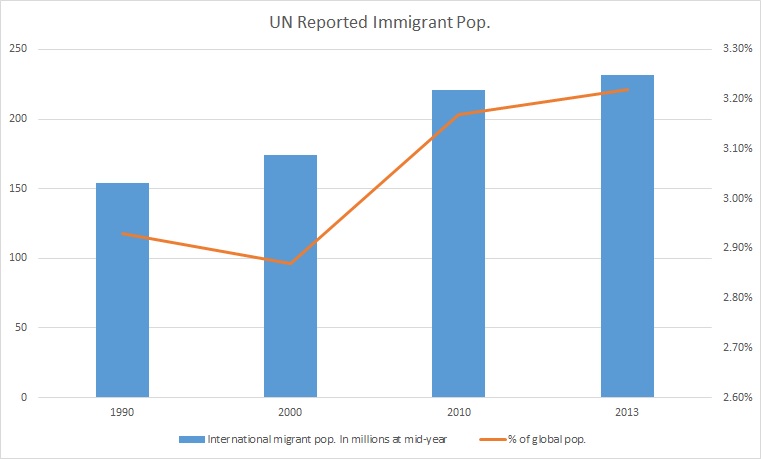|
Oman–United Arab Emirates Border
The Oman–United Arab Emirates border consists of three non-contiguous sections totalling 609 km (378 mi) in length. Description Northern (Musandam) section The northern section of the border divides the Omani exclave of Musandam from the UAE Emirates of Fujairah and Ras Al Khaimah. This peninsula commands the strategic Strait of Hormuz, with the Oman-UAE border consisting of a series of irregular, though roughly horizontal, lines running through mountainous terrain, from the western Persian Gulf coast to the eastern Gulf of Oman coast. Middle (enclaved) section The middle section of the border consists of the Omani enclave of Madha, within which is the UAE counter-enclave of Nahwa, belonging to the Emirate of Sharjah. This territory is the only territory between UAE and Oman which is not lined with any barrier and there is no border crossing between Madha, Nahwa, or the rest of the UAE. Southern section The southern, and by far the longest, section of the frontier sta ... [...More Info...] [...Related Items...] OR: [Wikipedia] [Google] [Baidu] |
Oman Map 1979
Oman, officially the Sultanate of Oman, is a country located on the southeastern coast of the Arabian Peninsula in West Asia and the Middle East. It shares land borders with Saudi Arabia, the United Arab Emirates, and Yemen. Oman’s coastline faces the Arabian Sea to the southeast and the Gulf of Oman on the northeast. The exclaves of Madha and Musandam are surrounded by the United Arab Emirates on their land borders, while Musandam’s coastal boundaries are formed by the Strait of Hormuz and the Gulf of Oman. The capital and largest city is Muscat. With a population of approximately 5.46 million and an area of 309,500 km2 (119,500 sq mi), Oman is the 123rd most-populous country. From the 18th century, the Omani Sultanate was an empire, competing with the Portuguese and British empires for influence in the Persian Gulf and the Indian Ocean. At its peak in the 19th century, Omani influence and control extended across the Strait of Hormuz to Iran and Pakistan, and as f ... [...More Info...] [...Related Items...] OR: [Wikipedia] [Google] [Baidu] |
Hadf
Hadf is a village in Al Buraimi Governorate, in northeastern Oman. For several decades it was administered as a condominium with certain rights held by the bordering Emirate of Ajman. Hadf, a small area on the Arabian Peninsula, a part of Oman, at one time was jointly ruled with the Emirati member state of Ajman. The agreement defining the Hadf zone was signed in Salalah on 26 April 1960 by Sultan Said bin Taimur and in Ajman on 30 April 1960 by Shaikh Rashid bin Humaid Al Nuaimi, ruler of Ajman. This provided for some joint supervision in the zone by the ruler of Ajman and the shaikhs under the rule of Muscat. It allowed the Ajman ruler to continue collecting zakat (Islamic tax). The ruler of Ajman was, however, not to interfere in the affairs of the local people, the Bani Ka'ab (a branch of the Banu Kaab), which were the sole responsibility of shaikhs who were under Muscat rule. In the 1980s, the ruler of Ajman, Shaikh Humaid bin Rashid al Nuaimi, transferred the area to Sulta ... [...More Info...] [...Related Items...] OR: [Wikipedia] [Google] [Baidu] |
Al Wajajah
Al-Wajājah (), or just Wajajah, is the busiest of four Omani ports bordering the United Arab Emirates, with Wadi Al-Jenzi, Buraimi, and Teibat being the other three. Al-Wajajah is located in the Batinah administrative division of Oman. The town is 90 minutes by road from the city of Dubai, one hour from the Omani town of Sohar, and three hours from Muscat, the capital of Oman. A tourist visa to visit Oman can be obtained at the Wajajah check-post for residents of the United Arab Emirates travelling by road. Tourists of nationalities qualifying for visa on arrival in Dubai can also use their Dubai visa to enter Oman by road, as a tourist, for a maximum of 3 weeks. Al-Wajajah lies on a bus route from Dubai to Muscat. Border crossing There is a 24-hour border crossing between the UAE and Oman, with Khatmat Malaha being an alternative. The route between Dubai and Wajaja goes in and out of Omani territory since the border is not straight. See also * Oman–United Arab Emirates ... [...More Info...] [...Related Items...] OR: [Wikipedia] [Google] [Baidu] |
Dibba Al-Baya
Dibbā Al-Bayʿah () is geographically part of the Dibba region that faces the Arabian Sea, and is bordered by the United Arab Emirates to the south. It is a ''Wilayat'' in the ''Muhafazah'' of Musandam, Sultanate of Oman, on the east coast of the Arabian Peninsula.It is considered one of the most famous Omani cities known in the pre-Islamic days because it contains Dibba market, which is one of the most famous Arab markets that was known at that time, as merchants from different countries around the world such as India, Sindh and China used to come to it, and some historians, such as Al-Asmai, attribute this name to the locusts Creeping to express the large number of people in it, and the area of that city is approximately 37 km2. Available services and trades In Dibba, three schools for boys and girls have been created in the sphere of education, and these schools can accommodate roughly 1041 male and female students. There are also many services and development projects avai ... [...More Info...] [...Related Items...] OR: [Wikipedia] [Google] [Baidu] |
Terrorists
Terrorism, in its broadest sense, is the use of violence against non-combatants to achieve political or ideological aims. The term is used in this regard primarily to refer to intentional violence during peacetime or in the context of war against non-combatants. There are various different definitions of terrorism, with no universal agreement about it. Different definitions of terrorism emphasize its randomness, its aim to instill fear, and its broader impact beyond its immediate victims. Modern terrorism, evolving from earlier iterations, employs various tactics to pursue political goals, often leveraging fear as a strategic tool to influence decision makers. By targeting densely populated public areas such as transportation hubs, airports, shopping centers, tourist attractions, and nightlife venues, terrorists aim to instill widespread insecurity, prompting policy changes through psychological manipulation and undermining confidence in security measures. The terms "terrori ... [...More Info...] [...Related Items...] OR: [Wikipedia] [Google] [Baidu] |
Overseas Security Advisory Council
The Bureau of Diplomatic Security, commonly known as Diplomatic Security (DS), is the security branch of the United States Department of State. It conducts international investigations, threat analysis, cyber security, counterterrorism, and protection of people, property, and information. Its mission is to provide a safe and secure environment for officials to execute the foreign policy of the United States. Overview The Bureau of Diplomatic Security (DS) is the political face and parent organization of the Diplomatic Security Service (DSS). The DSS consists of over 2,000 special agents who are responsible for protecting visiting foreign dignitaries and U.S. diplomatic missions abroad. The DSS is the primary conduit utilized by the Bureau of Diplomatic Security and the Department of State for security and law enforcement matters. Both acronyms (DS and DSS) are used interchangeably within the State Department and other agencies. The assistant secretary of state for diplomatic s ... [...More Info...] [...Related Items...] OR: [Wikipedia] [Google] [Baidu] |
Immigration
Immigration is the international movement of people to a destination country of which they are not usual residents or where they do not possess nationality in order to settle as Permanent residency, permanent residents. Commuting, Commuters, Tourism, tourists, and other short-term stays in a destination country do not fall under the definition of immigration or migration; Seasonal industry, seasonal labour immigration is sometimes included, however. Economically, research suggests that migration can be beneficial both to the receiving and sending countries. The academic literature provides mixed findings for the relationship between immigration and crime worldwide. Research shows that country of origin matters for speed and depth of immigrant assimilation, but that there is considerable assimilation overall for both first- and second-generation immigrants. Discrimination based on nationality is legal in most countries. Extensive evidence of discrimination against foreign-b ... [...More Info...] [...Related Items...] OR: [Wikipedia] [Google] [Baidu] |
Julian F
Julian may refer to: People * Julian (emperor) (331–363), Roman emperor from 361 to 363 * Julian, of the Roman gens Julia, with imperial dynasty offshoots * Saint Julian (other), several Christian saints * Julian (given name), people with the given name Julian * Julian (surname), people with the surname Julian * Julian (singer), Russian pop singer Places * Julian, California, a census-designated place in San Diego County * Julian, Kansas, an unincorporated community in Stanton County * Julian, Nebraska, a village in Nemaha County * Julian, North Carolina, a census-designated place in Guilford County * Julian, Pennsylvania, an unincorporated community and census-designated place in Centre County * Julian, West Virginia, an unincorporated community in Boone County Other uses * ''Julian'' (album), a 1976 album by Pepper Adams * ''Julian'' (novel), a 1964 novel by Gore Vidal about the emperor * ''Julian'' (play), an 1823 play by Mary Russell Mitford * Julian ( ... [...More Info...] [...Related Items...] OR: [Wikipedia] [Google] [Baidu] |
First World War
World War I or the First World War (28 July 1914 – 11 November 1918), also known as the Great War, was a World war, global conflict between two coalitions: the Allies of World War I, Allies (or Entente) and the Central Powers. Fighting took place mainly in European theatre of World War I, Europe and the Middle Eastern theatre of World War I, Middle East, as well as in parts of African theatre of World War I, Africa and the Asian and Pacific theatre of World War I, Asia-Pacific, and in Europe was characterised by trench warfare; the widespread use of Artillery of World War I, artillery, machine guns, and Chemical weapons in World War I, chemical weapons (gas); and the introductions of Tanks in World War I, tanks and Aviation in World War I, aircraft. World War I was one of the List of wars by death toll, deadliest conflicts in history, resulting in an estimated World War I casualties, 10 million military dead and more than 20 million wounded, plus some 10 million civilian de ... [...More Info...] [...Related Items...] OR: [Wikipedia] [Google] [Baidu] |
Violet Line (1914)
The Violet Line was a boundary line agreed between the United Kingdom and the Ottoman Empire in March 1914.{{citation , url= https://www.dur.ac.uk/ibru/publications/view/?id=49, title=The Iraq-Kuwait boundary dispute: historical background and the UN decisions of 1992 and 1993, author=Harry Brown, publisher=IBRU Boundary and Security Bulletin, date=October 1994, accessdate= 1 April 2020 It started from the termination of the Blue Line agreed to at the Anglo-Ottoman Convention of 1913 and extended to the border between the Ottoman Yemen Vilayet and the British Aden Protectorates. Together with the Blue Line, the Violet Line effectively divided the Arabian peninsula in two. This boundary between the Ottoman and British empires is what eventually led to the border between North Yemen and South Yemen South Yemen, officially the People's Democratic Republic of Yemen, abbreviated to Democratic Yemen, was a country in South Arabia that existed in what is now southeast Yemen from 1 ... [...More Info...] [...Related Items...] OR: [Wikipedia] [Google] [Baidu] |




